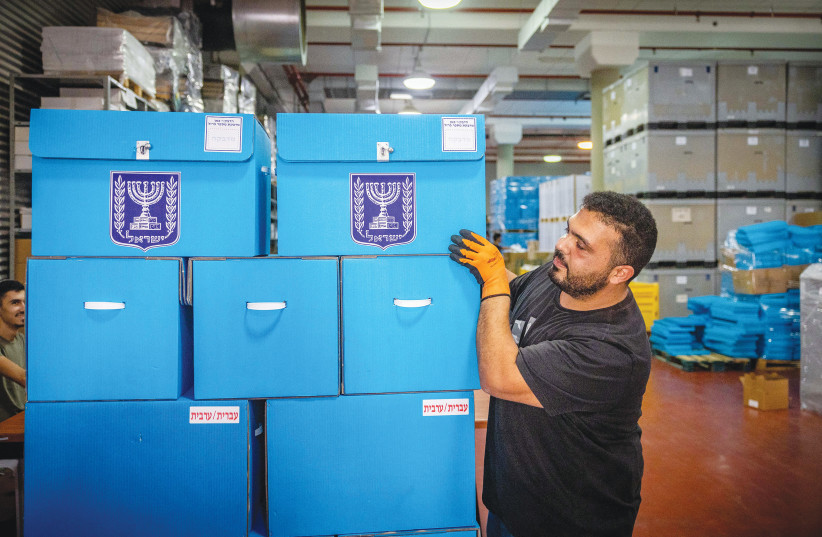Israel is now in the “twilight zone,” the 72 hours leading up to Election Day, during which Israeli law prohibits the publishing of polls. The next time Israelis will encounter poll results will be exit polls, after the balloting closes on Tuesday at 10 p.m.
Past elections have shown important momentum swings in these last hours, and this election might be no different.
In the last polls before the March 2021 election, for example, Defense Minister Benny Gantz’s Blue and White Party was barely expected to pass the 3.25% electoral threshold. The party picked up tens of thousands of votes in the ensuing 72 hours and ended up as the fourth-largest party, with eight seats.
Are any such surprises in store this time around? If so, what could they be?
Minister Ayelet Shaked's Habayit Hayehudi

First, there is the question of Interior Minister Ayelet Shaked’s Bayit Yehudi Party.
A source from Shaked’s party on Sunday said its internal polls showed it was gaining with each passing day. The party’s internal polls purposely oversampled the demographic of religious Zionists aged 65 and over, which it was felt was underrepresented in the standard polls and included larger than average support for Bayit Yehudi, the source said.
Furthermore, it was important to note that among undecided voters, there were a high number of religious-Zionist former Yamina voters, he said. According to a poll by KAN News, there were enough votes in that group to push Bayit Yehudi over the electoral threshold, the source said.
A different internal poll last week showed that if the 3.25% threshold were not a factor, the party would receive five seats. Many potential Bayit Yehudi voters fear that their vote will be wasted if the party does not end up passing the threshold, as the latest polls predicted.
While Shaked could end up wasting tens of thousands of right-wing votes, her party also has the potential to fly by the electoral threshold and complete a coalition for opposition leader Benjamin Netanyahu, chairman of the Likud.
Voters in the Arab sector
Another trend that began to pick up speed before the polls went dark was a rise in voting percentages in the Arab-Israeli sector. In 2020, a record high of 64.8% of Israel’s Arab citizens participated in the election, giving what was then the undivided Joint List a record 15 seats.
The percentage plummeted in the 2021 election to 44.6% and a combined 10 seats between two parties. This time around, there are three Arab parties in the running – Hadash-Ta’al, Ra’am (United Arab List) and Balad. While just weeks ago, polls showed that the expected voting percentage would barely reach 40%, expectations are now closer to 50%.
If those numbers reach 55%, all three parties could pass the electoral threshold and reach a combined 12 seats. This could potentially swing the election and bring the Right bloc back under the 61-seat mark.
The weather
A third element that could affect the election come Tuesday is the weather.
Rain is expected from the North all the way to the northern Negev, and historically, the worse the weather is, the lower the voting percentage. The weather’s effect is complex, however, as rainy weather decreases voter turnout. Pleasant weather, however, also draws voters away from polling stations as people head outdoors or to the shore, according to a 2020 report by the Israel Meteorological Service (IMS).
A fun fact from the IMS report: Elections for the first Knesset took place on a wintry, rainy day in January 1949, and voter turnout was 87% – a record that has yet to be broken. In contrast, the elections for the second Knesset took place on an average summer day in July 1951, and voter turnout was 75% – the lowest until the election of 2000.
Rain in Israel is usually sporadic, and ballot booths are open for 15 hours, from 7 a.m. to 10 p.m. Even if the rain leads to a slightly smaller voter turnout, it presumably would affect both sides equally. Still, the weather is a factor that might have a small effect on the eventual turnout – and in such a tight race, even small changes can make a difference.
